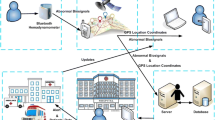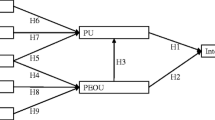Abstract
Assessing users’ satisfaction with the user interface of Healthcare Information System in order to determine their acceptance rate should be highlighted, especially at the early stages of its implementation. This study aimed to evaluate the users’ satisfaction with Social Security Electronic System (SSES), as a widely used HIS in Iran. The population of this study composed of 327 users among whom 176 were randomly selected. An adapted version of Computer System Usability Questionnaire (CSUQ) was used for collecting data. Data were analyzed using t-test, ANOVA, Spearman, Man Whitney U, and Kruskal-Wallis. In general, 140 subjects answered the questionnaire. The users’ mean scores of satisfaction with different aspects of usability and their overall satisfaction were 56.00 ± 13.00 and 3.01 ± 1.15, respectively, indicating a medium satisfaction. Overall satisfaction and satisfaction with different aspects of usability had no significant relationship with gender, age, education degree, and working experience with computers (p > 0.05). No significant relationship was observed between overall satisfaction and working experience with SSES (p > 0.05). However, the users’ satisfaction with different aspects of usability was significantly related to experience with HISs and SSES (p < 0.05). In addition, the overall satisfaction was significantly related to experience with HISs (p < 0.05). Based on the results, the users were relatively satisfied with the system. Thus, a user centered design is recommended to improve satisfaction by addressing several modifications such as providing an easier documentation process, using lower keystrockes and fewer screens, displaying appropriate messages, providing pop-ups, guiding the users, correcting the errors, and adding search functionalities.
Similar content being viewed by others
References
Banet GA, et al. Effects of implementing computerized practitioner order entry and nursing documentation on nursing workflow in an emergency department. JHIM. 2006;20(2):45.
Horsky J, et al. A framework for analyzing the cognitive complexity of computer-assisted clinical ordering. J Biomed Inform. 2003;36(1):4–22.
Horsky J, Kuperman GJ, Patel VL. Comprehensive analysis of a medication dosing error related to CPOE. J Am Med Inform Assoc. 2005;12(4):377–82.
Bevan N, Carter J, Harker S. ISO 9241-11 revised: What have we learnt about usability since 1998?. In: International Conference on Human-Computer Interaction. Springer; 2015.
Zhang J, Walji MF. TURF: toward a unified framework of EHR usability. J Biomed Inform. 2011;44(6):1056–67.
Walji MF, et al. Are three methods better than one? A comparative assessment of usability evaluation methods in an EHR. Int J Med Inform. 2014;83(5):361–7.
Bates DW, et al. Reducing the frequency of errors in medicine using information technology. J Am Med Inform Assoc. 2001;8(4):299–308.
Han YY, et al. Unexpected increased mortality after implementation of a commercially sold computerized physician order entry system. Pediatrics. 2005;116(6):1506–12.
Ives B, Olson MH, Baroudi JJ. The measurement of user information satisfaction. Commun ACM. 1983;26(10):785–93.
Chin WW, Lee MK. A proposed model and measurement instrument for the formation of IS satisfaction: the case of end-user computing satisfaction. In: Proceedings of the twenty first international conference on Information systems. Association for Information Systems; 2000.
Lucas HC, Ginzberg MJ, Schultz RL. Information systems implementation: testing a structural model. Norwood: Ablex Publishing Corp; 1990. pp. 43-39.
Yusof MM, et al. An evaluation framework for Health Information Systems: human, organization and technology-fit factors (HOT-fit). Int J Med Inform. 2008;77(6):386–98.
Delone WH, McLean ER. The DeLone and McLean model of information systems success: a ten-year update. J Manag Inf Syst. 2003;19(4):9–30.
Mahmood MA, et al. Variables affecting information technology end-user satisfaction: a meta-analysis of the empirical literature. Int J Hum Comput Stud. 2000;52(4):751–71.
Scheepers R, Scheepers H, Ngwenyama OK. Contextual influences on user satisfaction with mobile computing: findings from two healthcare organizations. Eur J Inf Syst. 2006;15(3):261–8.
Gatian AW. Is user satisfaction a valid measure of system effectiveness? Inf Manag. 1994;26(3):119–31.
Suh K, Kim S, Lee J. End-user's disconfirmed expectations and the success of information systems. Inf Resour Manag J. 1994;7(4):30.
Tse DK, Wilton PC. Models of consumer satisfaction formation: an extension. J Mark Res. 1988:204–12.
Beuscart-Zéphir MC, et al. Impact of CPOE on doctor–nurse cooperation for the medication ordering and administration process. Int J Med Inform. 2005;74(7):629–41.
Khajouei R, de Jongh D, Jaspers MW. Usability evaluation of a computerized physician order entry for medication ordering. In: MIE. 2009.
Khajouei R, Jaspers MW. The impact of CPOE medication systems' design aspects on usability, workflow and medication orders. Methods Inf Med. 2010;49(1):3.
Khajouei R, et al. Effect of predefined order sets and usability problems on efficiency of computerized medication ordering. Int J Med Inform. 2010;79(10):690–8.
Khajouei R, Abbasi R. Evaluating nurses' satisfaction with two nursing information systems. CIN. 2017;35(6):307–14.
Safdari R, et al. Comparing four softwares based on ISO 9241 part 10. J Med Syst. 2012;36(5):2787–93.
Alipour J, et al. Users view about hospital information system in children's hospital, Bandar Abbas, Iran. 2010.
Lee TT, et al. Factors affecting the use of nursing information systems in Taiwan. J Adv Nurs. 2005;50(2):170–8.
Marasovic C, et al. Attitudes of Australian nurses toward the implementation of a clinical information system. Comput Nurs. 1997;15(2):91–8.
Mazzoleni M, et al. Assessing users' satisfaction through perception of usefulness and ease of use in the daily interaction with a hospital information system. In: Proceedings of the AMIA Annual Fall Symposium. American Medical Informatics Association; 1996.
Palm J-M, et al. Determinants of user satisfaction with a Clinical Information System. In: AMIA Annual Symposium Proceedings. American Medical Informatics Association; 2006.
Sittig DF, Kuperman GJ, Fiskio J. Evaluating physician satisfaction regarding user interactions with an electronic medical record system. In: Proceedings of the AMIA Symposium. American Medical Informatics Association; 1999.
Sleutel M, Guinn M. As good as it gets? Going online with a clinical information system. Comput Nurs. 1999;17(4):181–5.
Bahnassy A. Nurses’ satisfaction with the use of health information system (HIS) in a Saudi tertiary care medical center. IJARSSE. 2015;5(5):56–61.
Khajouei R, et al. Clinicians satisfaction with CPOE ease of use and effect on clinicians’ workflow, efficiency and medication safety. Int J Med Inform. 2011;80(5):297–309.
Kim S-Y. Factors affecting the degree of satisfaction for nursing information system. Stud Health Technol Inform. 2005;122:523–6.
Strudwick G, et al. A scoping review of research involving nurses and electronic health records in middle eastern countries. Int Arch Nurs Health Care. 2015;(1):012.
DeLone WH, McLean ER. Information systems success: the quest for the dependent variable. Inf Syst Res. 1992;3(1):60–95.
Pai F-Y, Huang K-I. Applying the technology acceptance model to the introduction of healthcare information systems. Technol Forecast Soc Chang. 2011;78(4):650–60.
Yen P-Y. Health information technology usability evaluation: methods, models, and measures. Columbia University; 2010.
Venkatesh V, Davis FD. A theoretical extension of the technology acceptance model: four longitudinal field studies. Manag Sci. 2000;46(2):186–204.
Rusli NM, Hassan S, Liau NE. Usability analysis of students information system in a public university. JETEAS. 2013;4(6):806–10.
Lee F, et al. Implementation of physician order entry: user satisfaction and self-reported usage patterns. J Am Med Inform Assoc. 1996;3(1):42–55.
Gress TW, et al. Contrasting Views of Physicians and Nurses about an Inpatient Computer-based Provider Order-entry System. 1999.
Michel-Verkerke MB. Information quality of a nursing information system depends on the nurses: a combined quantitative and qualitative evaluation. Int J Med Inform. 2012;81(10):662–73.
Davis SA, Bostrom RP. Training end users: an experimental investigation of the roles of the computer interface and training methods. MIS Q. 1993:61–85.
Soliman KS, Mao E, Frolick MN. Measuring user satisfaction with data warehouses: an exploratory study. Inf Manag. 2000;37(3):103–10.
Quaddus M, Intrapairot A. Management policies and the diffusion of data warehouse: a case study using system dynamics-based decision support system. Decis Support Syst. 2001;31(2):223–40.
Aggelidis VP, Chatzoglou PD. Hospital information systems: measuring end user computing satisfaction (EUCS). J Biomed Inform. 2012;45(3):566–79.
Park KS, Lim CH. A structured methodology for comparative evaluation of user interface designs using usability criteria and measures. Int J Ind Ergon. 1999;23(5):379–89.
Benbunan-Fich R. Using protocol analysis to evaluate the usability of a commercial web site. Inf Manag. 2001;39(2):151–63.
Lin JC-C, Lu H. Towards an understanding of the behavioural intention to use a web site. Int J Inf Manag. 2000;20(3):197–208.
Rushinek A, Rushinek SF. Accounting and billing software and user reactions: an interactive diagnostic audit trail. Inf Manag. 1985;9(1):9–20.
Shneiderman B. Designing the user interface: strategies for effective human-computer interaction. Pearson Education India; 2010.
Norman KL. Development of a Tool Measuring User Satisfaction of the Human-Computer Interface John P. Chin Virginia A. Diehl.
Ribière V, et al. Hospital information systems quality: a customer satisfaction assessment tool. in Systems Sciences, 1999. HICSS-32. Proceedings of the 32nd Annual Hawaii International Conference on. IEEE; 1999.
Gelderman M. The relation between user satisfaction, usage of information systems and performance. Inf Manag. 1998;34(1):11–8.
Acknowledgments
The authors thank all the users who participated in this study. Moreover, special thanks go to Laleh Tajaddini, the head of Information Technology Center of Payambare-Aazam Social Security Hospital in Kerman, for her cooperation and provision of the necessary facilities.
Funding
This research received no specific grant from the funding agencies in the public, commercial, or not-for-profit sectors.
Author information
Authors and Affiliations
Contributions
Both authors equally contributed to the design of the study, data collection and analysis, and interpretation of the results. Furthermore, they read and confirmed the final version of the submitted manuscript.
Corresponding author
Ethics declarations
Conflict of interest
The authors declare that there is no conflict of interest in this study.
Ethical considerations
The official permission was obtained from the Social Security Organization headquarter before performing the study. Further, the present study was approved by the System Governance Office of this organizations (No: 168/95/15391 and identifier: 7575999) and the Ethics Committee of Kerman University of Medical Sciences (No: IR.KMU.REC.1396.1409).
Additional information
Publisher’s note
Springer Nature remains neutral with regard to jurisdictional claims in published maps and institutional affiliations.
Rights and permissions
About this article
Cite this article
Khajouei, R., Farahani, F. The evaluation of users’ satisfaction with the Social Security Electronic System in Iran. Health Technol. 9, 797–804 (2019). https://doi.org/10.1007/s12553-019-00347-y
Received:
Accepted:
Published:
Issue Date:
DOI: https://doi.org/10.1007/s12553-019-00347-y




